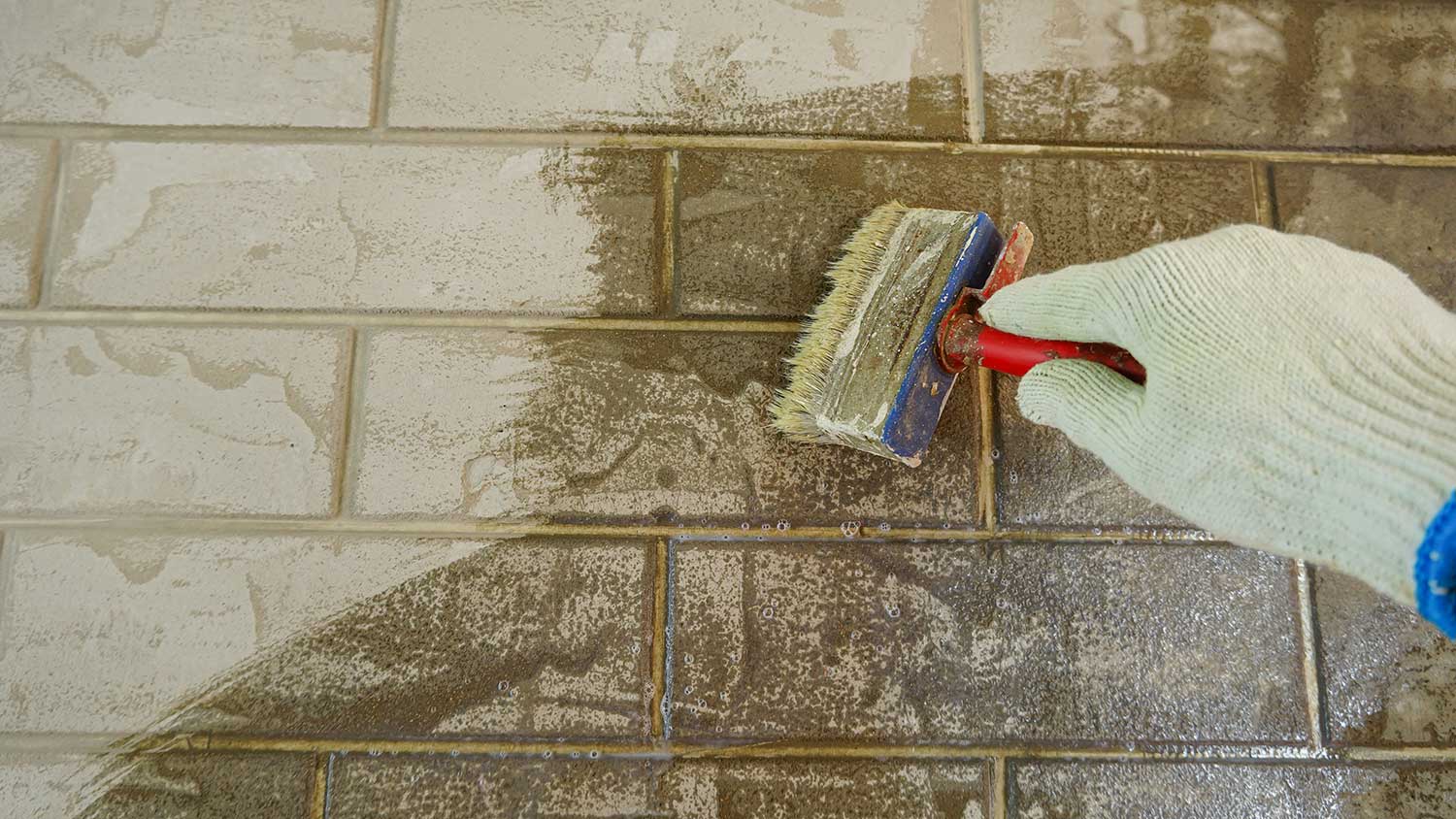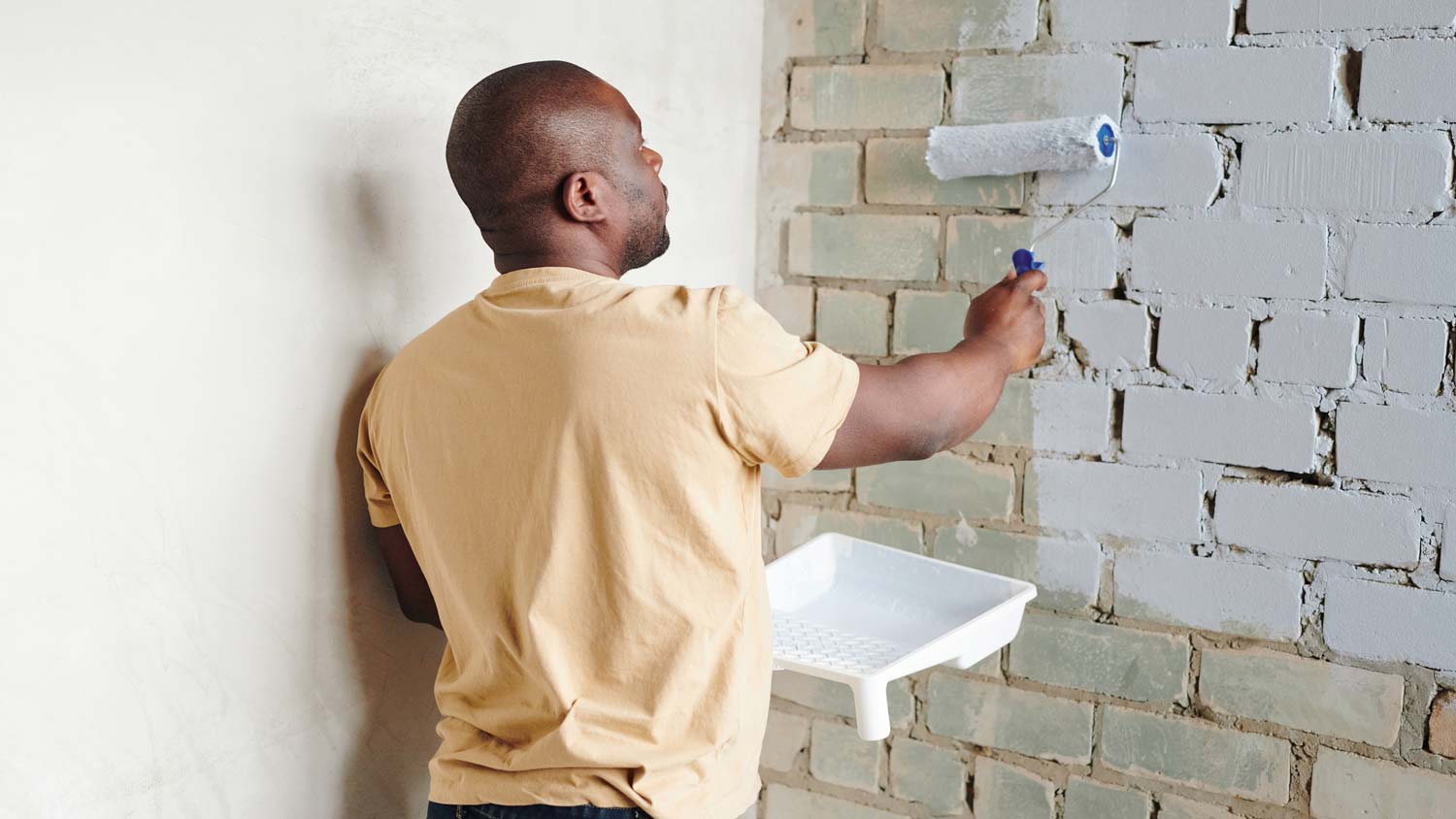
The cost to paint a stucco house depends on its size, the type of paint used, and any required repairs. This guide will help you budget for the painting project.
Add more curb appeal by staining or painting your brick


Brick stain is cost effective, durable, and easy to maintain.
Stain makes its mark by soaking into and attaching to brick and stone masonry.
Staining can be a complicated process.
Paint is easy to apply but not as long-lasting as brick stain.
Painting brick can lead to moisture issues over the long term if done incorrectly.
Though brick may seem immovable, there are so many ways to change its appearance. But if you’re like a lot of people looking to give their brick new life, you may be wondering which is better when it comes to brick stain versus paint. Paint and resurfacing are the most well-known options for altering the look of brick, but brick stain is just as worthy of your attention. Find out all you need to know about both methods and discover the right fit for your beautiful brick.

Paint and stain work well on brick, but each performs better in certain aspects. Here are the primary contrasts between the two projects.
Appearance is in the eye of the beholder, of course, and tastes vary. When it comes to brick, however, stain truly accentuates the natural look of the material, providing an opaque or translucent finish. Conversely, paint detracts from the original aesthetic. Also, once stain dries and you touch a stained brick, you feel brick (not a layer of paint). If you want your bricks to look like and feel like, well, bricks when it’s all said and done, then stain is the best choice.
Most attractive: Stain
There’s no doubt about it: Paint is much easier to apply than a staining solution. Not only is it DIY-friendly, but you can paint right over any imperfections. Brick stain, on the other hand, requires that each brick undergo thorough repairs and that you clean the entire area before you start.
Easiest to apply: Paint
Brick stain lasts a long, long time—20 years or more in most cases. Paint, on the other hand, starts peeling quickly, requiring a complete redo after just three to five years. This is due to the paint creating a standalone layer on top of the brick that traps moisture. This added moisture is bad for the brick and even worse for the paint.
Longest life span: Stain
Not only does brick stain offer a longer life span than paint, but it also helps protect the actual bricks by absorbing into the porous layers and adding a bit of weather resistance. Once again, paint adheres to the top of bricks and doesn’t offer too much by way of environmental protection. As a matter of fact, paint actually chips away at bricks over time due to the moisture trapped between the layers.
Best durability: Stain
Paint comes in many more color and finish options than stain. So whether you’re hunting for that one perfect exterior brick and paint color combination or you’re grabbing a few different shades for a unique look, you’re going to find what you want. Stain is a bit more of a complicated formula, so there are more limitations on what’s available as far as color and finish are concerned.
Most customizable: Paint

Brick stain is a type of finish that you can use to change the color of your brick or stone masonry without using regular paint. It actually soaks into and binds with the brick to permanently alter its appearance and give it a durability boost. You’re likely to find brick stain everywhere—from exterior structures to fireplaces and beyond.
Long-lasting: When applied correctly, brick stain lasts a long time—20 years or longer, depending on your local environment. This is due to the nature of brick stain and how it fully absorbs into brick. It’s essentially impossible to wash or peel off.
Durable: Brick stain provides an extra layer of protection that goes above and beyond most other treatment methods, shielding it from the elements.
Inexpensive: This type of treatment is on the budget-friendly side, costing an average of $0.70 to $2 per square foot, or $300 to $3,000 for entire exterior projects, depending on how much brick you want to stain.
Easy maintenance: Brick stain is durable, so it doesn’t need additional protective measures to keep it in tip-top shape. You don’t need sealant or anything else; just wash it two to three times per year.
Not appropriate for all brick: You won’t always be able to use brick stain, especially if your brick is already coated with a non-porous sealant or paint. Basically, anything that gets in the way of proper absorption is a no-go. Also, stain doesn’t do well with damaged brick, so conduct repairs before application.
Lengthy application: Brick stain takes time to apply properly. You must fully clean and repair each brick ahead of time for an even finish.
DIYing is difficult: Stain is absorbed into the brick, so exercise extreme caution during the application process to avoid accidentally spilling it on other materials or other portions of your brick exterior. Find a professional exterior painter near you if you don’t think you can handle this one.
Irreversible: Much like a German schmear, since the stain soaks into and binds with the brick, staining is impossible to reverse without fully replacing the bricks. You should be 100% sure that you want to stain your brick before beginning.

Paint is paint. It offers a wide range of colors to choose from, so you can really get creative as long as you know the basics of how to paint brick properly for a clean finish. There are plenty of different types of paint appropriate for both exterior and interior brick, though many DIYers prefer elastodynamic paint due to its elastic quality.
DIY-friendly: If you want to do the job yourself and save a few bucks, you can’t go wrong with paint. It’s easy to apply and requires no special skills or tools, though a pair of painter’s overalls wouldn’t hurt.
Plenty of color choices: Take your pick from nearly every color imaginable with brick paint. Want a rainbow? Go get a rainbow.
Offers some protection: Though not as weather-resistant as stain, brick paint offers a moderate degree of protection against the elements.
It traps moisture: This is a big one. Standard paint creates a sealed layer directly on top of the brick that traps moisture. This leads to chipping and cracking in the short-term and severe water damage in the long term. You should get specialized masonry and brick paint to avoid structural damage.
Doesn’t last too long: Environmental conditions eventually peel away the paint, requiring a repeat paint job every three to five years.
You get a flat finish: Brick paint creates a noticeably painted look with a flat finish. This is fine for some, but it de-accentuates the natural look and feel of brick.
Painting a brick exterior costs anywhere from $3,500 to $10,500, depending on your preferred finish, the size of your home, and whether or not you add pressure washing to the project. Most exterior painters prefer to wash the brick before going ahead with the job to eliminate dirt and grime that would otherwise get in the way of an even coat.
The cost to stain brick is a little lower at $1,200 to $10,000 or $1 to $4 per square foot. This depends on the size of your home and the condition of your brickwork. If your brick requires repair, do it ahead of time. Just like with painting brick, your pro will likely recommend a thorough washing to eliminate debris, mold, and salt deposits, otherwise called efflorescence.
A homeowner can DIY both staining and painting brick. However, this unique material is more delicate than other siding types, so unless you have experience painting brick, you may want to leave it to the pros. A professional exterior painter will likely do a better job, using high-quality stains or paint that bond with the brick, ensuring durability and a vibrant color that doesn’t peel or fade over time. There are also safety concerns, as you’ll have to spend a fair amount of time on a ladder. A local exterior painter can complete the job safely and leave your brick house looking beautiful.
Audrey Bruno contributed to this piece.
From average costs to expert advice, get all the answers you need to get your job done.

The cost to paint a stucco house depends on its size, the type of paint used, and any required repairs. This guide will help you budget for the painting project.

Do you want the color of your exterior doors to really pop? Learn about the labor cost to paint the front door, back door, and other entranceways.

Powder coating can give your furniture, car, and other objects a new look. Learn what powder coating costs by object, size, and other factors with this guide.

Breathe new life into your deck by sanding it before adding stain. Follow this guide to learn how to sand a deck and choose the right grit sandpaper.

If you’re looking for a quick and easy way to make your home’s exterior shine, find out how to paint shutters to give these essential features a facelift.

Have you ever wondered if you can paint aluminum siding? The answer is yes, but here's what you need to know before starting this project.